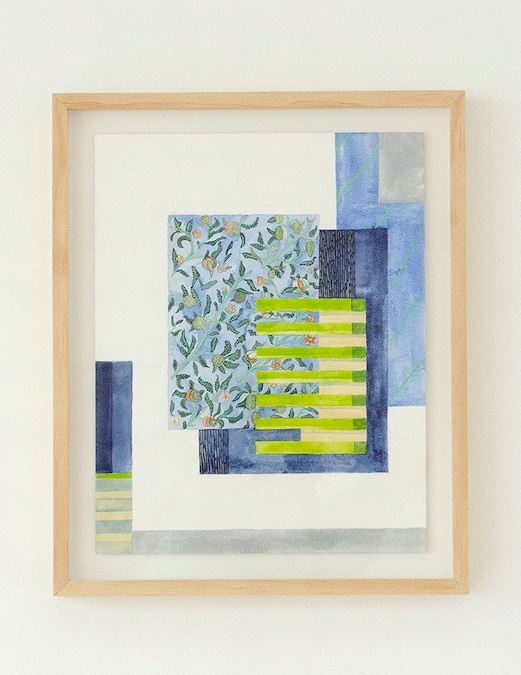
Review
Appetite for Control: Sofía Ortiz
by Fernanda Ballesteros
At Nixxxon
Reading time
4 min
We play at controlling nature and end up like kids building a sandcastle. Just as we put sand in a plastic bucket in order to give it the shape of a tower, we put plants in cans of condensed milk or plastic bags in order to mold the earth, and we render leaves the ideal size for the corner of a living room. We suffocate a rubber tree in a pot so that the green decorates the space between the TV and the window. We control, classify, name, and annihilate at our whim. Just up to the point when an earthquake or volcano or body of water pulled by the moon destroys our sandcastles and reminds us that the control of nature is an illusion.
That’s why it makes sense that Sofía Ortíz’s conversation with plants is in watercolor: it’s one of water, color, and movement. The same material that nourishes and raises plants up to heaven is what Sofía mixes with color in order to capture plants on cotton paper. Watercolors, just like plants, require a space to breathe, to flow. Too many layers suffocate the technique, take away its authenticity—its power—which is to demonstrate water’s will in traces of choreographed spills. And watercolors don’t erase. Or it could be done, but it’s difficult. Since nature doesn’t erase. Wounds heal, though they’re not eliminated. Each movement is definitive and enters into the butterfly effect, into that great chaotic orchestra of the Whole.

I call Sofía from a terrace in Paris. It’s the first time that I’ve spent an entire winter here and that I’ve been outside of Mexico for more than a year. Just two weeks ago the first buds I saw on the trees on my avenue struck my eyes and chest with a force that was as if I had seen a baby coming out of a woman. From where I am now, I can see a tree on which little bubblegum pink flowers are timidly beginning to open. Those that remain shut undress before the cold sun in fists of magenta: tiny, embedded in branches still without foliage. Sofía answers my call from a park near her house in Mexico City; she’s walking her dog. I wish I could be walking with her among the ash trees, the elephant legs, the cacti, and the hot plants of her watercolors.
How do we fulfill our need for plants? How do we connect with them? How do we treat those who nourish us, those who soothe us, those who hurt us? Sofía talks to me about Poussin and Morris, about art history, about evolution in the representation of nature. Does representation also come from the desire for control? Or to communicate? What’s the border between a healthy relationship and manipulation?

Sofía first portrayed the public and then the private. Avenue plants and then indoor plants. Outside or inside, between the asphalt of the street and the clay of the pot, the appetite for space is always present. Sofía has named one of her works Naturaleza muerta (“still life”), which could be understood as “death to nature”: living stems in a garbage bag, a test of the control game.
We’re all plants, a friend once told me when I had to choose between two different apartments to live in (she bet on the smaller one, but with more light). We’re all plants: I can confirm it in Sofía’s paintings. We humans, absorbed in the same system that suffocates plants, in the same vortex, change our mission on Earth. Like plants, we concentrate on becoming a useful element in the capitalist aesthetic, embedded in classifications that facilitate the manipulation of those in power.

At the end of the call, Sofía tells me about her next exhibition: mountains, landscapes, the search for feeling overwhelmed by nature. I think that in Apetito de espacio Sofía has wanted to show us how in our control game we lose the true relationship with nature, which is what happens when we are minuscule, in its context. And they, the plants, stretched out, reproduced, wild, open to the sun or the cold, together. To separate is to divide forces. We tear off pieces of nature and observe the pinch of the cosmos from the armchair in the living room, satiating our need to be surrounded by other leaving creatures, or our appetite for control.
Translated to English by Byron Davies
Published on April 22 2023